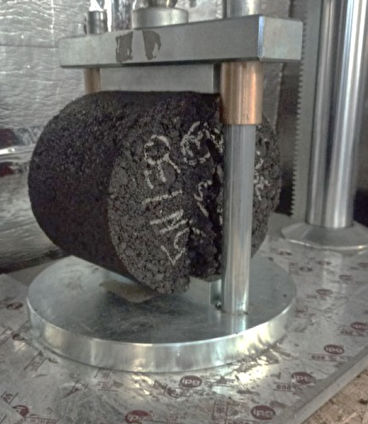
What wears down asphalt pavement in Minnesota? For high-volume roads, it’s mainly traffic. For rural roads, it’s harsh weather that does the most damage. Despite these differences, both road types are usually built with the same type of asphalt pavement.
Recognizing the need for a more customized approach, the Minnesota Local Road Research Board enlisted U of M researchers to create an optimized asphalt mixture for building tougher rural roads. A better asphalt mixture could improve service life—and reduce costs and improve driver safety.
Minnesota’s temperature extremes take a toll on road performance and longevity. Freeze-thaw cycles, occurring over days or weeks, let water penetrate and expand in distressed asphalt pavement. Cracks and potholes can form, shortening the road’s life and making a bumpy and possibly unsafe driving experience.
In the study’s first phase, researchers reviewed existing literature to understand which factors influence asphalt performance on low-volume roads. In addition, they explored the current mixture design practices in Minnesota and other cold-climate states. Through an online survey, representatives from Minnesota transportation agencies identified the most common forms of damage on their rural roads.
The second phase of the study focused on fieldwork examining pavement densities and distresses. Researchers collected and studied asphalt cores from 34 road sections in 10 Minnesota counties and performed pavement distress surveys at core collection sites in 4 of those counties. In the project’s final phase, researchers studied seven asphalt mixes in the laboratory using strength and resilience tests to identify those with superior performance.

“Our findings show that while the traffic traveling on higher-volume roads helps compact the pavement, rural roads did not get enough of this densification because of their lower traffic volumes,” says Manik Barman, associate professor with the University of Minnesota Duluth’s Swenson College of Science and Engineering. “As a result, the pavement on rural roads has more air pockets that can amplify environmental distresses.”
Because of its greater densification, a mixture called Superpave 5 came out on top in the analysis. “It holds considerable promise for mitigating some common environmental distresses on low-volume asphalt roads in Minnesota,” Barman says.
Past research has focused on structural design procedures for improving low-volume road performance. “These results offer promising indications that improvements in asphalt mixtures can have a positive effect on pavement performance for Minnesota’s rural roads,” says Joel Ulring, pavement preservation engineer with MnDOT’s Office of Materials and Road Research.
The co-investigator for the study was Professor Mihai Marasteanu of the Department of Civil, Environmental and Geo- Engineering on the Twin Cities campus.
—Megan Tsai, contributing writer


